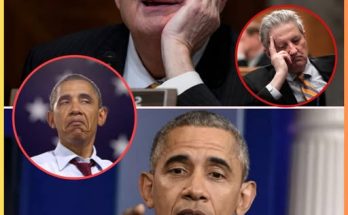In the hushed hush of the White House press briefing — a setting where clarity and candour have always been the currency — something shifted. On a crisp early November day, Kristen Holmes of CNN stood at the podium, not content with the smooth assurances. And Karoline Leavitt, increasingly uneasy, found herself unable to answer some of the most direct and troubling questions about the President’s health. The moment is more than a blip in the political news cycle. It is a fissure in trust.
When the President of the United States undergoes a medical procedure — in this case an MRI during a visit to Walter Reed National Military Medical Center just months after his annual physical — the American public, especially those of us in the 45-65+ age bracket who watch each scan, each bruise, each statement closely, wonder: What are they not telling us?
The Three Unanswered Questions

-
Why does the White House believe it is free to determine what medical information to disclose — or withhold?
Kristen Holmes pointedly asked whether the President had the right to disclose medical information without congressional or independent oversight. Leavitt responded with talk of transparency and the President’s “optimal health,” but could not provide any legal statute, executive order, or regulatory clause in support. She offered no explanation of how privacy laws or executive branch norms apply. The result: a vague posture, which fed uncertainty rather than alleviating it. -
If this was truly just a routine physical, why did it include an MRI — a highly specific diagnostic scan?
The White House described the exam as a “routine” check-up, yet Kristen Holmes noted that this type of imaging procedure is neither routine nor standard in annual evaluations for healthy older adults. Leavitt described the visit only as a “follow-up appointment.” She offered no explanation of what was being followed up. -
Why was there no prior announcement or explanation of the scan if it was so innocuous?
For decades, White House physicians and communications teams have held to protocols of advance notification for the President’s medical visits. In this instance, the disclosure came only after the President himself mentioned the MRI on Air Force One. When Holmes asked why there had been no prior or contemporaneous clarity, Leavitt essentially shrugged: “I’ll check back for you.”
Why This Matters — Especially To You

You may well ask: “Why should I care about the MRI of a 79-year-old former president?” The answer is simple: because transparency in health matters to a democracy, and particularly to those of us tired of rhetorical assurances when our own bodies and healthcare demand candour.
When a leader refuses to fully explain a serious medical procedure — choosing instead the language of “follow-up,” “optimal health,” and “routine exam” — it leaves a gap in accountability. It creates a suspense that moves beyond politics and into the personal lives of citizens who rely on truth from the highest office.
For the 45-65+ age group, many of us are living with chronic conditions, undergoing MRIs, managing bruises, swelling, doctor visits. We know that when things are routine, they’re announced and explained. When they’re
not, something else may be happening. The visuals have only deepened the unease: visible bruising, ankle swelling, the breakdown between declared health and observable symptoms. The Daily Beast+1
A Crisis of Confidence

This is not simply about one MRI or one press briefing. It is about the erosion of confidence in the mechanisms that should keep our leaders accountable. When a government claims the highest standard of transparency — yet repeatedly fails to deliver clarity — it invites doubt, and doubt breeds division.
Leavitt’s inability to answer the key questions triggered a rare moment of press-room discomfort. She privately promised to “check back” yet offered no timeline, no data, no medical briefing, no doctor on camera. That is precisely what fuels speculation. The media and the public were left asking: If everything is fine, why so silent?
What Should Happen Next?
-
Full disclosure of the medical report — not just “optimal health,” but details: what prompted the scan, what was found, what follow-up is planned.
-
A live on‐camera briefing with the physician
— ideally the President’s physician answering questions from the press.
-
Clarity on health‐transparency norms — Are there guidelines for when a President must disclose specific procedures or findings? If so, they should be publicly known.
-
Restoration of trust — The public deserves a direct line between the office and the people; this cannot be a one-way street of assurances without substance.
For the Reader Thinking Ahead
This episode should give you pause. Think of your own doctor visits, your own MRI scans, your own bruises and swellings. If you are being told “there’s nothing to worry about” but not being shown the full picture, you ask again. You demand clarity. Because leaders are not exempted from the human body’s vulnerability — and neither is the trust of the citizens they serve.
And remember: when transparency falters at the top, the ripple effect reaches every hospital corridor, every news headline, every patient waiting room. The gap widens between those who ask questions — and those who must accept silence as an answer.
Final Thoughts
In that press briefing, something more than medical details was exposed: the fragility of assurance without substance. The public did not receive answers — instead, it received platitudes. For elders, for caregivers, for voters who have placed faith in the office and expect honesty in return — this matters deeply.
Because in the end, the health of our leaders is not just a private matter. It is public trust made manifest. And when trust cracks, the consequences ripple far beyond the camera lights and podiums.


